



Lab 2: Cantilevered Equilibrium (Part I)
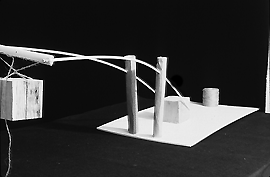 The Problem
The Problem
The problem is to create a free-standing cantilevered sculpture using only the standard kit of parts provided.
The Objectives
The objectives of this exercise are many. This is the first exercise in which the principles presented in the lectures can be applied in a physical manner. The concepts of strength and stability can be tested with the "kit of parts" included for each group. Structural principles are really quite basic. This is just the beginning - more complex and poetic structures can be built upon these basic concepts. The most important things to remember are:
- that structures are an everyday part of our environment.
- that structural understanding increases a designer's repertoire.
- that structural concepts can be simply visualized and understood.
During the process of the design and construction of the sculpture, the relationship between
action and reaction
supporting and supported elements
statics and dynamics
essential and non-essential elements
should be investigated. Each individual should confirm their intuitive understanding of static equilibrium and initiate an understanding of the kinds of forces that different types of materials can withstand.
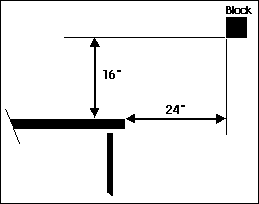 The Rules
The Rules
The only materials that can be used for this exercise are included in the kit of parts provided. This consists of two blocks of wood (one a 3.5" cube and the other 1.5" x 3.5" x 8.25"), two dowels (3 ft X 1/4 inch), a 5/8" foamcore platform (12" x 24"), cotton twine, 3 sheets of sandpaper, 25 thumb-tacks, and 5 sheets of A4 (8.5" x 11") paper. A "sculpture" should be created which suspends one of the blocks at least 16 inches (40 cm) vertically and 24 inches (102 cm) horizontally away from the edge of a table.
Glue of any kind cannot be utilized!
The Documentation
In addition to the completion of the sculpture within the lab session, each group must submit a sketched plan and elevation of the sculpture at the end of the period.
The lab report to be submitted by the deadline noted by the TA must contain:
- a written verbal description, with illustrations, of the structural system(s)
- a written verbal description, with illustrations, of the structural elements
- a written verbal description, with illustrations, of the flow of the forces within the system(s)
- the answers to the questions:
- Where would your sculpture fail if the weight of the suspended block were to steadily increase?
- What kind of failure would this represent?
- What would your group do to decrease the probability of such a failure? Where, and how, wouldyou reinforce the structure of the sculpture?
An Image Gallery of Past Projects
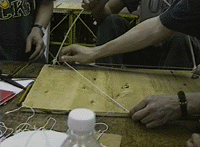
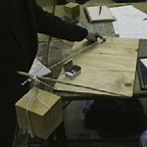
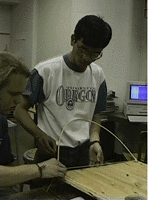
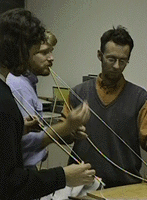
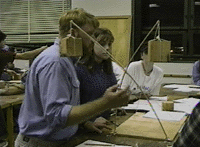
Details of the construction...




Copyright © 1995, 1996, 1997 by Chris H.Luebkeman
 The Problem
The Problem The Rules
The Rules







